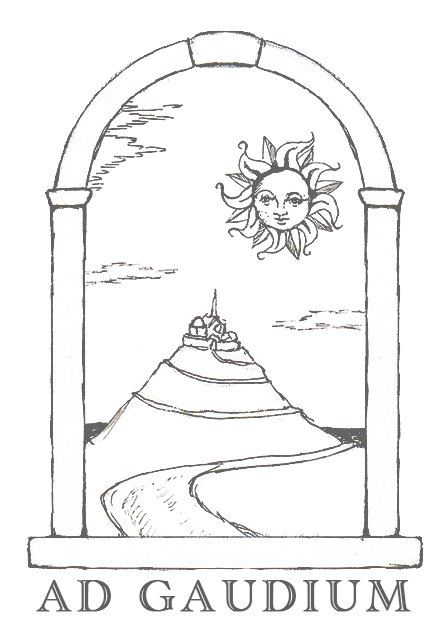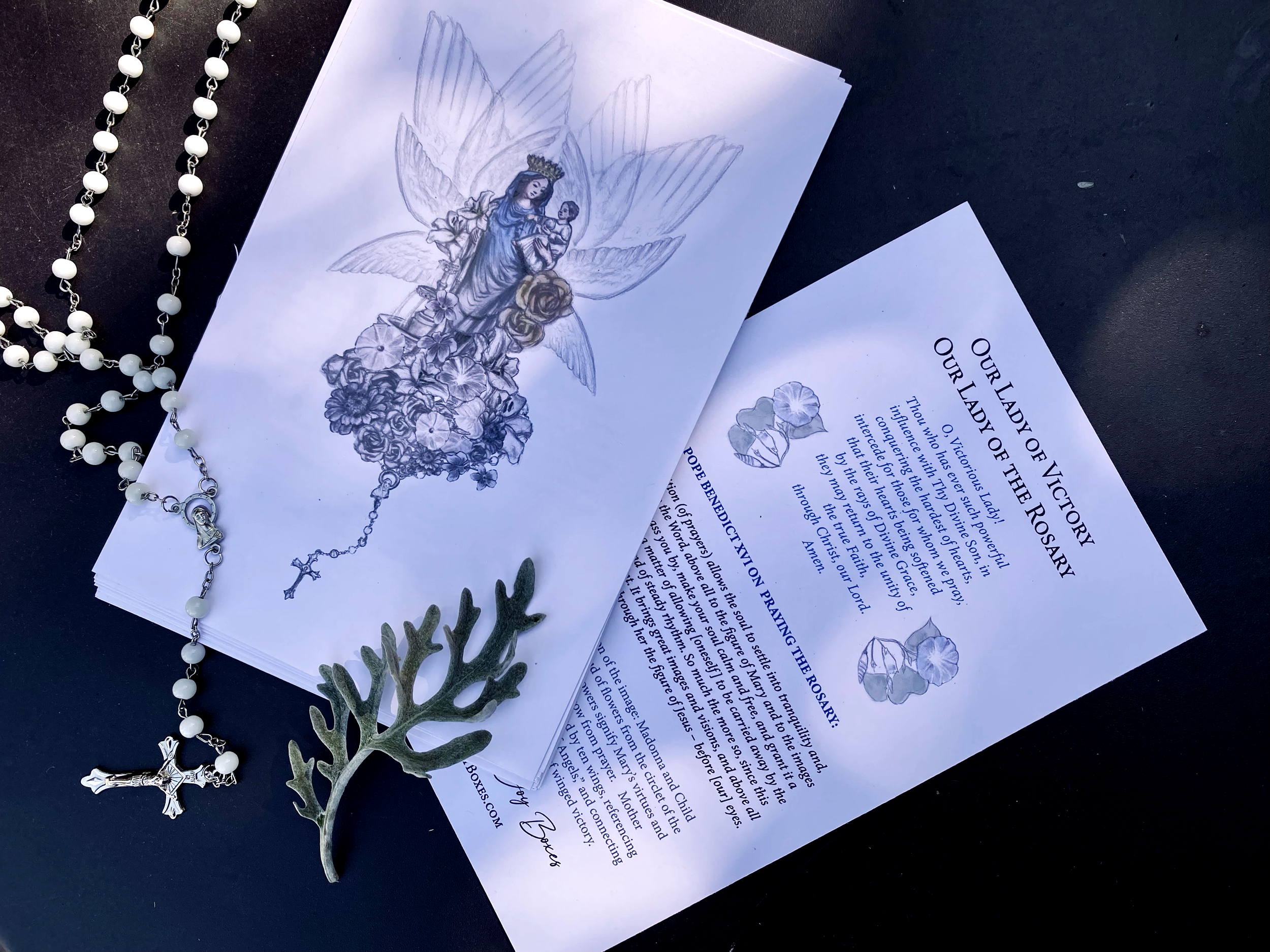Our Lady of Victory, Our Lady of the Rosary - Printable Prayer Card
Printable displayed.
I’m endeavoring to explore Catholic monthly devotions in both my artwork and in prayer. Here we have October closing. The month of the rosary will give way to November, the month of praying for the dead.
Before we dive into the anarchic, sugar-fueled revels of All-Hallows-Eve and the celebration of holy souls that follows, I want to linger a bit with this month’s devotion. October is the month of the rosary because the feast of Our Lady of the Rosary falls on October 7th. The Marian title celebrated on this feast was previously “Our Lady of Victory.” The October 7th feast was instituted after the stunning naval victory at Lapanto, where Christian forces broke the Turkish naval fleet, checking the expansion of the Ottoman Empire. Europeans prayed the rosary, invoked Our Lady’s intercession, and went on to defeat the materially-advantaged Turkish forces.
This month I’ve been pondering the connection between victory and praying the rosary.
My relationship with the rosary is a fickle one. I struggle with the focus and regularity that daily prayer of the rosary demands. When my children were younger and nursing created structured stillness, I was more apt to complete the full chaplet over the course of a day. These days, my prayer is more often a hasty decade as a prelude to sleep, a devotion released, like final wisps of smoke, from the dying embers of consciousness. But I aspire to a deeper and more reverent relationship with the rosary.
In its highest form, the rosary structures and delineates time for meditating on the lives of Christ and Mary. This focused meditation is what might be called the “full bloom of contemplation.” But during days and seasons when our minds feel earthbound, the simple repetition of prayers--the repeated chance to say and mean the Hail Marys, Our Fathers, and Glory Be’s still offers us a spiritual lifeline. One could say this is less-developed “bud” version of the prayer.
The Rosary is a practice that has a built-in beginning, middle, and end. While many of us aspire to spend time in meditative prayer or in adoration, these are open-ended practices. The Rosary tells us when it is accomplished with the final “Hail Holy Queen.” No matter how our thoughts stray during its recitation, simple completion of a rosary (or a decade of a rosary) gives us something concrete to aim for. It gives us a chance at Victory.
I picture praying of the rosary as many things: a wall thrown up around a safe and sacred garden; a channel where flow the irrigating waters of grace; a lifeline thrown down from Heaven (as in the Michelangelo’s fresco of judgement); a phone line connecting me with my Mother; a seeing stone that gives glimpses of the divine.
These images presented themselves as I set out to make a drawing honoring Our Lady of Victory/ Our Lady of the Rosary. The resulting picture shows a cloud of flowers growing from the loop of a rosary chaplet. The types of flowers have Marian significance: roses for the Mary as “the Mystic Rose” and for St. Dominic’s vision of a chain of roses; lilies for purity; violets for humility; morning glories for the protection of Our Lady’s Mantle; zinnias because they are known as “little Marys” and their various colors and shapes are analogous to the variety of ways that Mary has come to be known through history. The Madonna in the picture is a drawing of the late Gothic Sculpture, the Virgin of Paris.
The tinting was something I wasn’t sure about and am content to leave as “good enough for now.” Perhaps a restrained blush of color, confined to Our Mother and the Holy Infant’s face, dress and the closest flowers, expresses the “presque vue” aspect of prayer---the “almost seen” where we catch but a glimpse and do not see in full.
May our Lady of Victory smile upon you—now, and many Octobers into the future.


